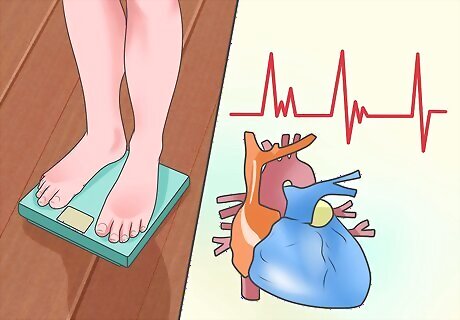
views
X
Research source
[2]
X
Trustworthy Source
Oregon State University Linus Pauling Institute
Research center dedicated to promoting optimal health through cutting-edge nutrition research and public outreach
Go to source
Taking Vitamin D3 Supplements

Recognize the different types. There are two forms of vitamin D. Vitamin D2, also known as Ergocalciferol, is a plant-derived form that is added to milk, juice, and cereals. Vitamin D3, also known as cholecalciferol, is generally considered a better form because it is the form your body produces when it is exposed to sunlight. It is also found in animal products. Vitamin D2 is safe for vegans and vegetarians since it is plant derived. Vitamin D3 is not, however, because these supplements are derived from the fat from lamb's wool.

Get the right amount. The general recommended daily amount for vitamin D vary depending on your age, though men and women need the same amount at the same age. The daily recommended dose for each age group is: Infants from birth to 12 months need 400 IU (10 mcg) Those who are one to 70 years old need 600 IU (15 mcg) Individuals over 70 years old need 800 IU (20 mcg) Women who are breastfeeding or pregnant need 600 IU (15 mcg) Remember that those that are deficient in Vitamin D3 are more likely to need higher doses to build levels up. Once they are consistently having good D3 blood readings, they may be able to switch to a lower maintenance dose.

Learn the correct dosage. Although your body needs a certain amount of vitamin D each day, you should take more than that as a supplement. This is because your body will not absorb all of the vitamin D from the supplement each time you take it, so you should have a dose larger than the amount you need each day. Most doctors currently recommend 1000 IU of vitamin D3 per day to ensure that enough vitamin D is absorbed. The Linus Pauling Institute, one of the leading research centers in vitamins, minerals, and nutrients, recommends 2000 IU of Vitamin D3 a day. If you have certain conditions that might benefit from vitamin D3, your doctor may suggest a higher dosage. Always follow your doctor's instructions when it comes to increased or decreased dosage.

Take the supplement. You can buy pure vitamin D3 supplements as well as multivitamins with vitamin D3 in them. However, these multivitamins generally have low levels, so you may be better off taking it as a separate supplement. Most supplement capsules are 1000 IU each, but some can be as low as 400 IU. Pay attention to the kind you get. Take one to three daily, depending on the dosage per capsule. It is recommended that you take your vitamin D3 with a meal.

Get your levels tested. Once you have been taking vitamin D for awhile, you should have your serum levels tested. This will ensure that you have the right levels vitamin D in your system. Ask your doctor to perform this test as your yearly checkup or during your next visit. Your levels should be at least 50 nmol/L. Your levels may still be low after taking supplements for awhile. Your doctor may increase your supplement dose to help increase your levels. He or she may also check for issues that might be blocking your absorption of vitamin D3. This testing should occur at least once a year.
Understanding Vitamin D

Learn how it works. As soon as sunlight hits your skin, it is absorbed into your skin cells. This triggers the production of vitamin D, which occurs next in the liver and then the kidneys. Once it is in your body, vitamin D helps promote calcium absorption, helps with the remodeling and growth of bones, is involved with making your immune system function properly, and helps with cell regulation and cell growth. Vitamin D also prevents softening of the bones, brittle bones, and rickets in children.

Recognize a deficiency. So many people assume they are not deficient, but in fact many of us are deficient. There are groups of people who are particularly at risk for vitamin D deficiency, though it is something everyone should be aware of. People who are more at risk include: Elderly adults Infants Those with darker-toned skin Those with limited to no exposure to the sun Anyone with conditions that limit fat absorption, such as inflammatory bowel disease (IBD) People with excess weight or who are obese Those who have undergone gastric bypass surgery

Know the risks. There are some risks involved with both low and high levels of vitamin D. Low levels of vitamin D might increase the risk of pancreatic and colon cancer. Low levels are also associated with an increased risk of autoimmune diseases, pre-diabetes, Type 1 and Type 2 diabetes, multiple sclerosis, and high blood pressure. Having too much vitamin D can also cause health issues. It can cause weight loss, anorexia, and a dangerously high heart rate.

Talk to your doctor. There are a number of medications, such as Cerebyx and Luminal, that can decrease your vitamin D levels. If you are taking these, ask your doctor if you need to take supplements to increase your levels. Some medications decrease the absorption of the vitamin D in your body, which include Questran, Xenical, and Colestid. Ask your doctor about possible interactions with these medications. As a general rule, make sure you wait at least two hours after you take these medicines to take your vitamin D supplements.




















Comments
0 comment